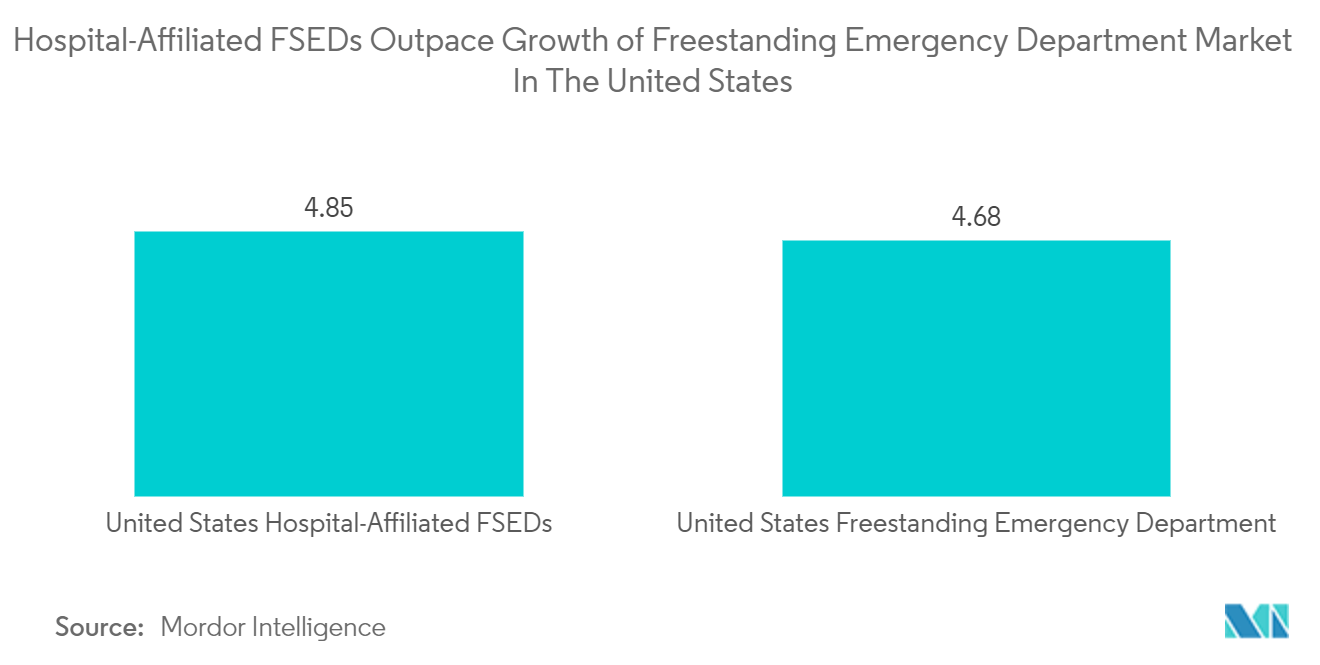Market Trends of United States Freestanding Emergency Department Industry
Emergency Care and Other Services: Driving the FSED Market Growth
Segment Dominance: Emergency Care and Other Services represent the largest segment within the U.S. FSED market, covering a broad spectrum of services such as trauma care, acute medical treatment, and specialized services. This segment currently accounts for 49% of the total market size, highlighting its central role in the sector's expansion.
Growth Drivers and Future Outlook: Several factors are fueling the growth of Emergency Care and Other Services. The rising incidence of acute conditions and traumatic injuries requiring immediate intervention is a significant contributor. In addition, FSEDs provide fast and efficient care, with shorter wait times and constant availability, making them increasingly popular. Moving forward, this segment is expected to maintain its dominance as demand for accessible, round-the-clock emergency services rises, particularly in both urban and rural communities.
Competitive Landscape and Disruptions: As competition intensifies, FSED operators are focusing on enhancing their service offerings and integrating advanced technologies. Investments in high-quality diagnostic tools and improving patient flow systems are critical competitive strategies. However, the market is not without its challenges—operators must remain agile in response to potential regulatory shifts or innovations in care delivery models that could disrupt traditional FSED practices.

Hospital-Affiliated FSEDs: Spearheading Market Expansion
Segment Growth Trajectory: Hospital-affiliated FSEDs are the fastest-growing segment within the market, with a projected compound annual growth rate (CAGR) of 4.85% between 2024 and 2029. This segment’s accelerated growth is driven by the integration of FSEDs within larger healthcare networks, allowing hospital systems to extend their emergency care capabilities beyond traditional facilities.
Market Drivers and Future Expectations: The increasing prevalence of chronic diseases, coupled with a growing preference for easily accessible care, is propelling the demand for hospital-affiliated FSEDs. These facilities benefit from strategic locations, leveraging the resources and brand recognition of established hospital systems. Over the next five years, hospital-affiliated FSEDs are expected to play an increasingly vital role in expanding access to emergency care across the United States.
Strategic Considerations and Potential Challenges: To maintain growth, hospital-affiliated FSEDs are focusing on expanding service offerings and integrating advanced diagnostics and telemedicine. Despite the promising outlook, market players must navigate challenges related to changing healthcare reimbursement models and the operational balance between central hospital facilities and their affiliated FSEDs.


